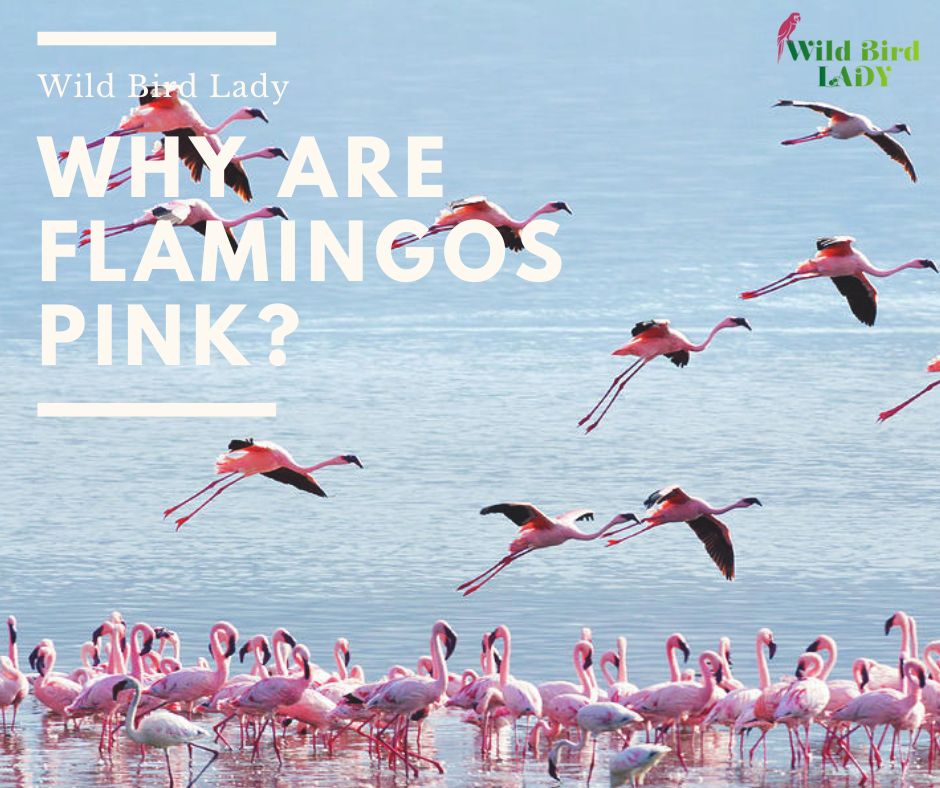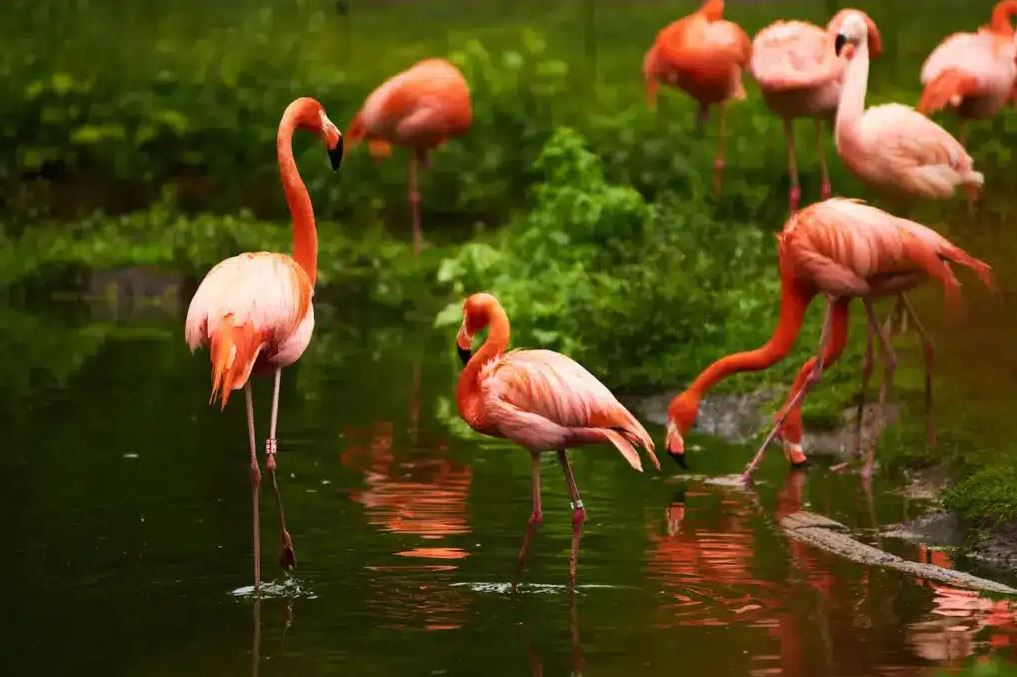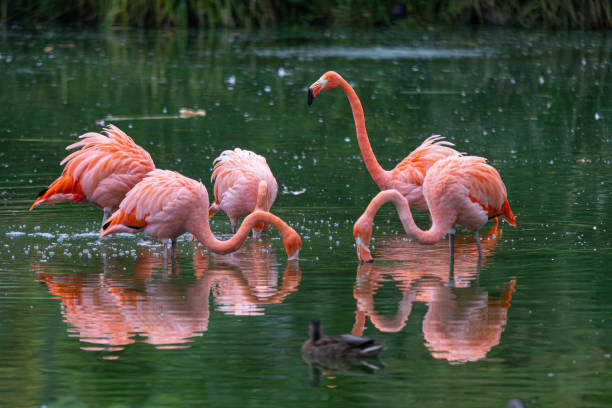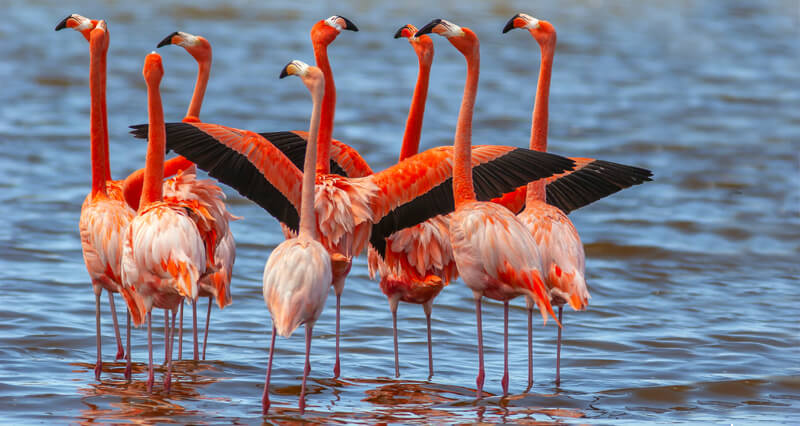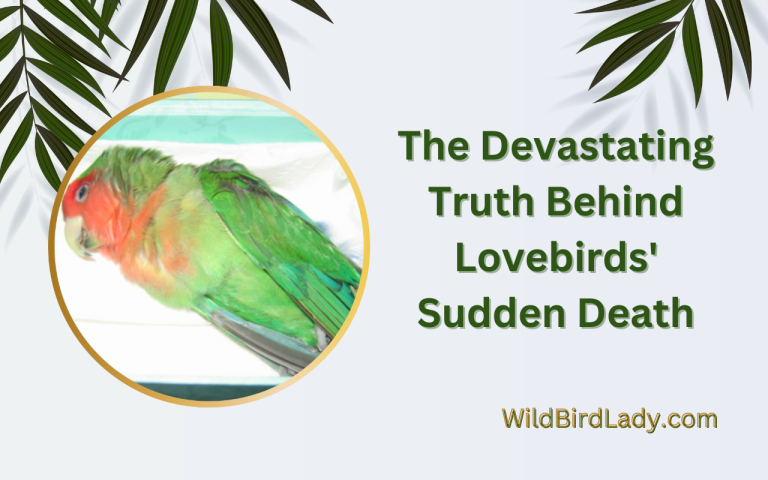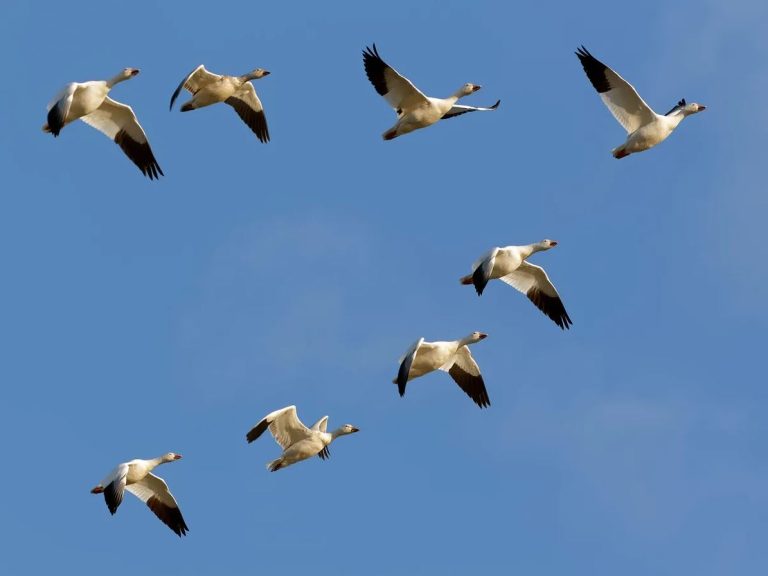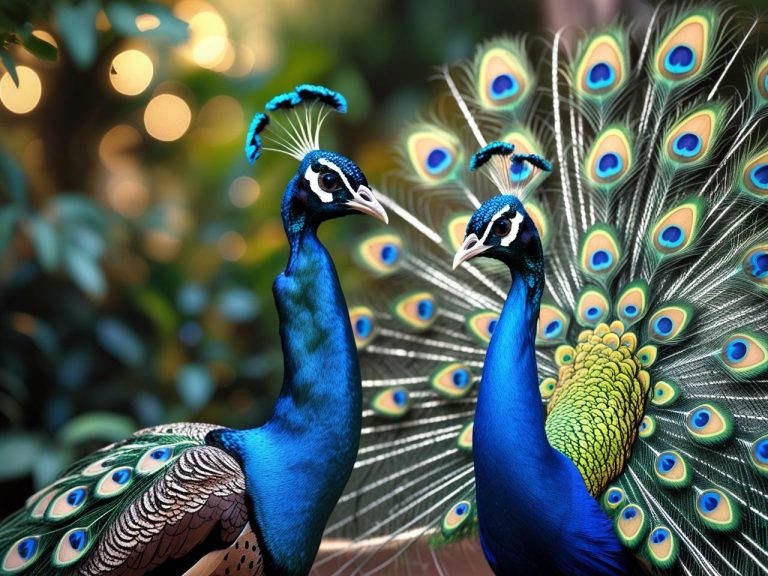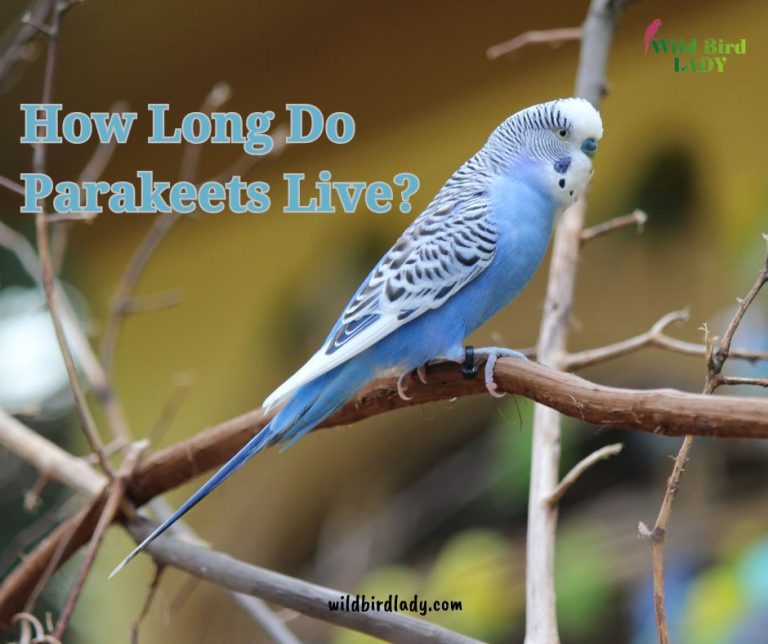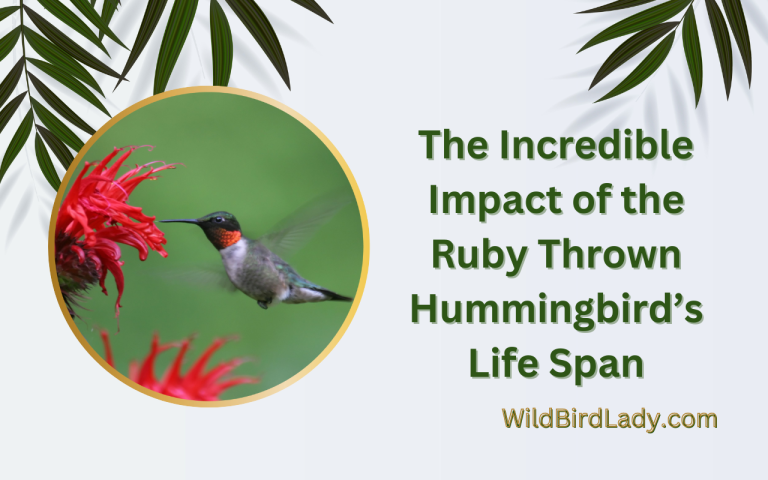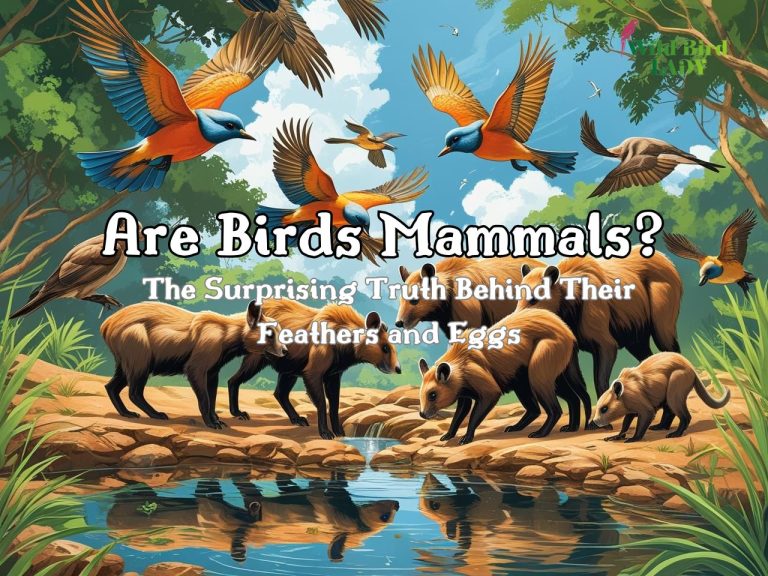Why Are Flamingos Pink? The Surprising Truth Behind Their Color
I still remember the first time I saw a flock of flamingos in the wild. It was at Lake Bogoria in Kenya—early morning mist rising off the water, and there they stood like living brushstrokes: hundreds of tall, slender birds blushing in soft pink hues. I was captivated. But that encounter also sparked a question that would follow me into years of birdwatching: Why are flamingos pink?
As it turns out, the answer is more fascinating than most people realize. Over the years, I’ve explored the science, diet, and even symbolism behind flamingo coloration—combining personal field observations with insights from ornithological research and peer-reviewed studies.
What Color Are Flamingos Naturally?
Believe it or not, flamingos are not born pink. Hatchlings come out gray or white, and they remain that way for months—even years—before developing the vibrant pink or reddish hues adults are known for.
So where does the color come from?
The Simple Answer: It’s in Their Diet
Flamingos get their pink coloration from carotenoids—a type of organic pigment found in algae, shrimp, and other small aquatic organisms they consume. According to the Cornell Lab of Ornithology, carotenoids are broken down in the liver and deposited in the skin and feathers of flamingos, creating those iconic shades of pink and coral.
Let’s break it down.
What Are Carotenoids?
Carotenoids are pigments responsible for red, orange, and yellow colors in many plants and animals. If you’ve ever eaten a carrot or admired a bright orange marigold, you’ve seen carotenoids in action.
There are two primary types of carotenoids important for flamingos:
- Beta-carotene – Found in carrots, sweet potatoes, and leafy greens.
- Canthaxanthin & Astaxanthin – Found in algae, brine shrimp, and crustaceans—the flamingo’s primary food source.
When flamingos digest these carotenoids, their bodies metabolize the pigments and use them to color their feathers and skin.
As the National Audubon Society explains, “Flamingos are what they eat—their pink color is a direct result of their specialized feeding habits.”
Flamingo Diet: What Exactly Are They Eating?
Over the years, I’ve observed flamingos feeding in several regions—from the salty lagoons of Mexico’s Yucatán to the soda lakes of East Africa. While their specific food sources vary slightly by habitat and species, the core diet remains similar:
| Food Source | Nutritional Role |
|---|---|
| Blue-green algae | Primary source of carotenoids |
| Brine shrimp | Rich in astaxanthin, enhances coloration |
| Diatoms | Provide both nutrients and pigments |
| Mollusks and insects | Supplement protein intake |
Flamingos use their uniquely shaped beaks to filter-feed. They invert their heads and pump water through comb-like structures called lamellae to trap microscopic organisms.
It’s an incredible adaptation—and one that directly influences how pink they become.
Not All Flamingos Are Equally Pink
Here’s something that surprises many birdwatchers: flamingos vary in color intensity based on what they eat and how often they molt.
Factors That Influence Flamingo Color:
- Diet Quality – Birds that feed on high-carotenoid diets (like those with access to brine shrimp and pigment-rich algae) become brighter pink.
- Molting – Feathers fade over time, especially if carotenoids aren’t replenished through diet.
- Species Differences – Some species are naturally more vibrant than others.
For example, the Caribbean flamingo (Phoenicopterus ruber) tends to be the brightest, often exhibiting rich magenta or crimson tones. In contrast, the Greater flamingo (Phoenicopterus roseus), found in Africa and Europe, is usually a lighter pink or pale peach.
As the San Diego Zoo Wildlife Alliance explains, “Flamingos kept in captivity often require dietary supplements to maintain their pink hues, as their natural food sources are hard to replicate.”
What Happens If a Flamingo Doesn’t Get Enough Carotenoids?
It’s simple: the bird loses its color.
Flamingos deprived of carotenoid-rich food turn white or pale gray over time. This doesn’t mean they’re unhealthy, necessarily—but color does play a role in social dynamics.
Color and Courtship
Research shows that brighter flamingos are often more successful in mating displays. During breeding season, flamingos engage in synchronized group dances—head-flagging, wing-saluting, and marching. A more vividly colored bird stands out and may be perceived as stronger, healthier, or a better mate.
According to a study published in Behavioral Ecology and Sociobiology, flamingos even apply “makeup” by rubbing pigmented secretions from their preen glands onto their feathers to intensify their color before courtship.
That’s right—flamingos wear makeup!
How Long Does It Take for Flamingos to Turn Pink?
Based on my field notes and confirmed by multiple avian studies, young flamingos usually take 1 to 3 years to develop full adult coloration. The speed depends heavily on:
- Access to carotenoid-rich food
- Metabolic efficiency
- Species and genetic factors
Some juveniles may retain gray feathers well into their second year, especially in less pigment-rich environments.
Do Flamingos Lose Their Color During Migration or Stress?
Yes—flamingo coloration can fade during times of migration, stress, or illness. These changes are usually temporary and reversible if the bird resumes a carotenoid-rich diet and recovers fully.
I once monitored a small flock in northern Tanzania that had undergone a stressful nesting season due to drought. Their color dulled visibly over a few weeks, only to return to full vibrancy once the rainy season brought back blooming algae and brine shrimp.
Symbolism of the Flamingo’s Color
Beyond the biology, flamingos have taken on symbolic meanings around the world—especially tied to their color.
- Pink = Grace & Elegance: In many cultures, pink flamingos are symbols of balance, calm, and beauty.
- Spiritual Cleansing: In Andean mythology, flamingos are associated with purification and renewal due to their presence in high-altitude salt flats.
- Pop Culture: The pink plastic lawn flamingo, invented in 1957, became an icon of kitschy Americana and suburban flair.
Whether spiritual or playful, flamingos captivate us not just because of their shape—but because of their surreal, vivid color.
Can You Influence a Flamingo’s Color in Captivity?
Absolutely, and this is common practice in zoos and conservation facilities.
Captive flamingos are often fed formulated diets enriched with synthetic carotenoids (like canthaxanthin or astaxanthin) to maintain their color. Without this supplementation, even healthy birds would turn pale.
However, experts caution against over-supplementation, as excessive pigments can impact liver function. That’s why institutions like the Smithsonian National Zoo follow strict dietary guidelines when caring for flamingo populations.
Fun Flamingo Facts That Might Surprise You
Here are a few gems I’ve picked up in my years of birdwatching:
- They Stand on One Leg to Conserve Heat: Flamingos spend hours standing in cold water, so lifting one leg reduces heat loss.
- They’re Highly Social: Some colonies number over 1 million birds—an astonishing sight!
- They Filter-Feed Upside Down: Their beaks are specially adapted to filter food while their heads are inverted in water.
- They Can Fly Long Distances: Despite their awkward look, flamingos are strong fliers and can migrate hundreds of miles when needed.
Conservation Note
Several flamingo species are considered vulnerable due to habitat loss, pollution, and climate change. The Lesser flamingo (Phoeniconaias minor), for instance, depends on fragile soda lakes that are increasingly threatened by human activity and drought.
Organizations like the International Union for Conservation of Nature (IUCN) and BirdLife International are working to protect key flamingo habitats worldwide. You can support these efforts by learning more about wetlands conservation, reducing plastic pollution, and supporting eco-tourism that respects wildlife.
FAQ: Why Are Flamingos Pink?
1. Are flamingos born pink?
No, flamingos are born gray or white. They develop their pink color over time due to carotenoid pigments in their diet, especially from algae and shrimp.
2. What do flamingos eat that makes them pink?
Flamingos eat blue-green algae, brine shrimp, and other carotenoid-rich organisms. These pigments are metabolized and deposited in their feathers and skin.
3. Can a flamingo lose its pink color?
Yes. If a flamingo’s diet lacks carotenoids or it becomes stressed or ill, its color can fade to pale pink or gray. Captive flamingos may require supplements to stay colorful.
4. Do all flamingo species have the same shade of pink?
No. Color varies by species, diet, and habitat. Caribbean flamingos are the brightest, while Greater flamingos tend to be paler.
5. How long does it take a flamingo to turn pink?
It typically takes 1 to 3 years for a young flamingo to develop its full pink coloration, depending on diet quality and species.
Final Thoughts from the Field
Flamingos aren’t pink by accident—they are a living reflection of what they eat and how they live.
Every time I spot a flamingo, I’m reminded of the delicate balance between biology and environment. Their color is more than just eye-catching—it’s a window into their health, habitat, and evolutionary strategy.
So next time you see a flamingo, remember: that striking pink hue is nature’s way of saying, this bird knows how to thrive.

